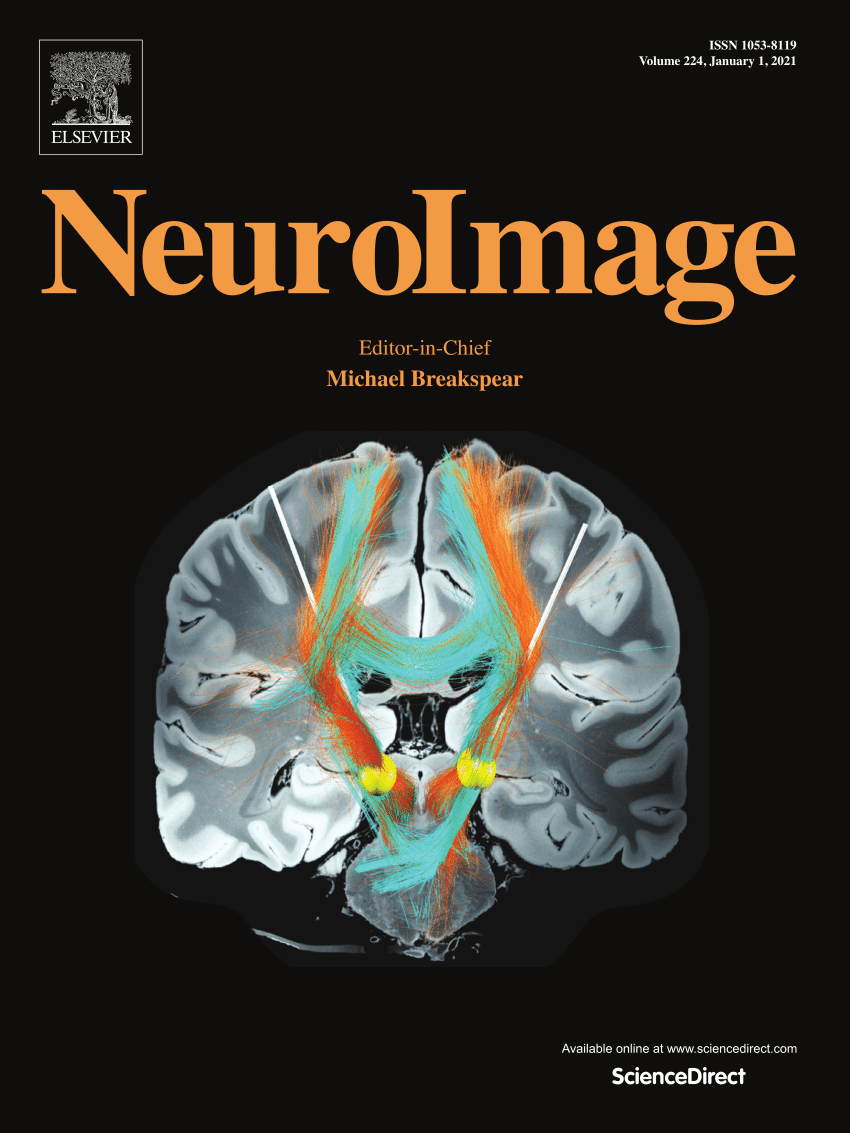β带去同步的因果作用:个体化高清晰度经颅交流电刺激改善了双手运动控制
IF 4.7
2区 医学
Q1 NEUROIMAGING
引用次数: 0
摘要
目的揭示3 mA高清晰度β经颅交流电刺激(tACS)是否能增强右侧感觉运动皮层覆盖区域C4的双手运动控制并影响运动相关β去同步(mr - β d),从而为mr - β d在运动控制中的多态性作用提供因果证据。方法在这项假对照交叉研究中,36名参与者接受了20分钟的固定20 Hz tac;基线运动规划时,tACS个体化达到β活性峰值;和连续三天随机分配的假tACS。每个参与者在总共108个疗程中接受了所有三种条件,以确保受试者之间的比较。在tACS之前、期间和之后,参与者执行一项手工跟踪任务(BTT),并测量64通道脑电图(EEG)数据。时空和时间聚类统计与潜在的线性混合效应模型被用来检验我们的假设。结果与固定tACS相比,个性化tACS可显著改善在线和离线的双手运动控制,并增加运动规划时的在线MRβD。与假手术相比,固定和个体化tACS对mr - β d没有离线影响,尽管tACS的影响确实趋向于假设的mr - β d增加。在整个研究过程中,MRβD和双手运动表现均有所增加。仅在运动规划期间,mr - β d与双手运动表现改善呈正相关,强调了mr - β d的功能多态性作用。tACS耐受性良好,无副作用发生。结论个体化β-tACS可改善双手运动控制,增强运动规划mr - β d在线功能。这些发现为MRβD在规划复杂运动行为时的重要性提供了因果证据。本文章由计算机程序翻译,如有差异,请以英文原文为准。

The causal role of beta band desynchronization: Individualized high-definition transcranial alternating current stimulation improves bimanual motor control
Objective
To unveil if 3 mA peak-to-peak high-definition β transcranial alternating current stimulation (tACS) applied over C4 –the area overlaying the right sensorimotor cortex–enhances bimanual motor control and affects movement-related β desynchronization (MRβD), thereby providing causal evidence for the polymorphic role of MRβD in motor control.
Methods
In this sham-controlled, crossover study, 36 participants underwent 20 min of fixed 20 Hz tACS; tACS individualized to peak β activity during motor planning at baseline; and sham tACS randomized over three consecutive days. Each participant underwent all three conditions for a total of 108 sessions, ensuring within-subject comparisons. Before, during, and after tACS, participants performed a bimanual tracking task (BTT) and 64-channel electroencephalography (EEG) data was measured. Spatiotemporal and temporal clustering statistics with underlying linear mixed effect models were used to test our hypotheses.
Results
Individualized tACS significantly improved bimanual motor control, both online and offline, and increased online MRβD during motor planning compared to fixed tACS. No offline effects of fixed and individualized tACS on MRβD were found compared to sham, although tACS effects did trend towards the hypothesized MRβD increase. Throughout the course of the study, MRβD and bimanual motor performance increased. Exclusively during motor planning, MRβD was positively associated to bimanual motor performance improvements, emphasizing the functionally polymorphic role of MRβD. tACS was well tolerated and no side-effects occurred.
Conclusion
Individualized β-tACS improves bimanual motor control and enhances motor planning MRβD online. These findings provide causal evidence for the importance of MRβD when planning complex motor behavior.
求助全文
通过发布文献求助,成功后即可免费获取论文全文。
去求助
来源期刊

NeuroImage
医学-核医学
CiteScore
11.30
自引率
10.50%
发文量
809
审稿时长
63 days
期刊介绍:
NeuroImage, a Journal of Brain Function provides a vehicle for communicating important advances in acquiring, analyzing, and modelling neuroimaging data and in applying these techniques to the study of structure-function and brain-behavior relationships. Though the emphasis is on the macroscopic level of human brain organization, meso-and microscopic neuroimaging across all species will be considered if informative for understanding the aforementioned relationships.
 求助内容:
求助内容: 应助结果提醒方式:
应助结果提醒方式:


